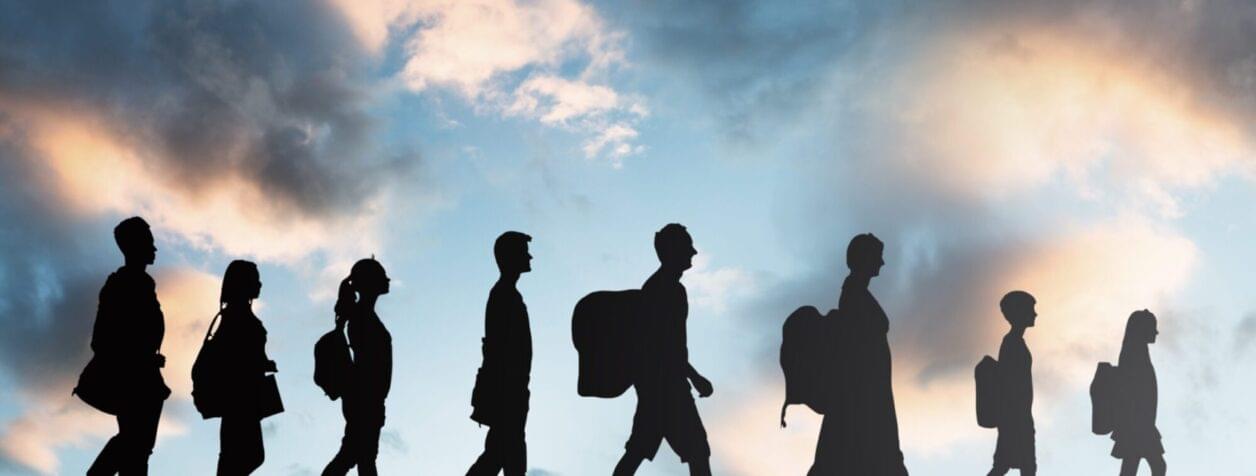Migrants and refugees are not pawns on the chessboard of humanity. They are children, women and men who leave or who are forced to leave their homes for various reasons, who share a legitimate desire for knowing and having, but above all for being more.
Pope Francis, Message for World Day of Migrants and Refugees, 2014
We have seen many new policies and legislation introduced on the topic of migration in recent years, from the Rwanda plan to the current Border Security Bill. We have also heard much rhetoric from politicians and the media around the small boats ‘crisis’ in the Channel and the need to ‘stop the boats’ and to ‘smash the gangs’.
Similarly, campaigners have been calling for ‘safe routes’ and advocating for the Government to introduce and to open safe routes for people to travel to the UK and to safely claim asylum.
There is some confusion as to what safe routes means and what constitutes a safe route, or even why we need safe routes. CSAN previously published a Guide to Refugee Resettlement which explained some of the schemes available, such as community sponsorship and the Homes for Ukraine scheme, but these schemes are limited and not open to all refugee populations. In this guide, we aim to explain the need for safe routes and why existing UK schemes are not sufficient.
Note on terminology
Migration issues are frequently in the headlines but there is much confusion over terms used to identify individuals and their legal status.
The SVP, a member organisation, has defined the terms and outlined the support they are entitled to:
Migrant:
There is no internationally accepted legal definition of a migrant. ‘Migrant’ is not a legal status as ‘refugee’ is for example. Many NGOs and agencies understand migrants to be people who have moved from their country of origin to a different country.
Asylum Seeker:
An asylum seeker is someone who has arrived in a country and claimed asylum. Until they receive a decision on their claim by the country’s government, they remain an asylum seeker.
Refugee:
A refugee is a person who has claimed asylum in a country (not their country of birth) and whose claim has been accepted, meaning that refugee is a legal status. Those who obtain refugee status are given protections under international laws and conventions and are entitled to financial and other support from their host country.
It is to be noted that these are terms denoting a legal status, but it is widely recognised that people forcibly displaced and fleeing their country of origin in fear for their life, are refugees and are referred to as such regardless of whether they have yet been granted refuge in a third country.
In this guide, we will be using the term refugee when referring to people forcibly displaced and journeying to seek asylum.
What do we mean by safe routes?
Safe routes refer to secure, legal and accessible pathways that allow refugees to reach protection without having to resort to dangerous and irregular journeys.
Many refer to ‘safe and legal routes’, emphasising that those who travel to the UK in small boats are doing so illegally. However, it is not illegal to claim asylum and international law, in protecting the right to asylum, explicitly states that people cannot be penalised for their mode of travel when claiming asylum[1]. UNHCR recently clarified this further and noted its preference for the term ‘irregular’ as opposed to ‘illegal’ to remove the criminal connotation, emphasising that ‘seeking asylum through such means is not a criminal act’[2].
International law recognises that people who are forcibly displaced are without access to the regular means of travel and compelled to travel irregularly. The lack of safe routes further forces them to undertake often dangerous journeys in search of refuge.
Safe routes can take many forms, such as humanitarian visas and resettlement programmes, but we require political will and a fair and just asylum system to see the expansion of existing routes and the introduction of new ones.
[1] https://www.unhcr.org/media/article-31-1951-convention-relating-status-refugees-non-penalization-detention-and-protection
[2] https://www.ein.org.uk/news/unhcr-issues-important-guidelines-refugee-conventions-article-31-clarifying-non-penalisation

